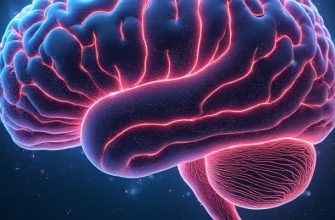
Engaging first-grade students requires a mix of interactive activities, visual aids, and hands-on learning. In this age group, attention spans are short, so it’s essential to keep lessons fun and dynamic. Below are key strategies to foster engagement:
- Interactive Storytelling: Use stories to introduce new concepts, incorporating student participation to keep them involved.
- Visual Aids: Utilize charts, images, and flashcards to reinforce lessons.
- Movement Breaks: Allow for short breaks where students can stand, stretch, and move around.
Effective tools for enhancing engagement include:
| Tool | Benefit |
|---|---|
| Educational Games | Reinforce learning through fun activities |
| Group Work | Encourage collaboration and communication |
| Technology | Interactive apps or videos to explain concepts |
“Engagement in early education sets the foundation for lifelong learning. It’s not only about the content but also about how we deliver it.”
- Effective Approaches for Keeping First Graders Engaged in Learning
- Interactive Learning Methods
- Visual and Auditory Cues
- Classroom Setup and Environment
- Adapting Classroom Activities to Suit Developmental Milestones
- Developmentally-Appropriate Activity Design
- Sample Activity Types by Developmental Focus
- Adapting Instruction to Individual Needs
- Using Visuals to Enhance Student Engagement
- Types of Visuals to Use in Class
- Benefits of Visuals
- Examples of Effective Visual Tools
- Incorporating Movement for Active Participation
- Types of Movement-Based Activities
- Benefits of Movement for Learning
- Using Game-Based Learning to Enhance Classroom Engagement
- Practical Applications of Game-Based Learning
- Benefits of Game-Based Learning
- Building Emotional Connections through Personalized Feedback
- Effective Ways to Provide Personalized Feedback
- Examples of Personalized Feedback
- Balancing Group Work and Independent Learning
- Key Approaches for Combining Group and Independent Learning
- Benefits of Group vs Independent Learning
- Engaging Young Learners through Interactive Tools
- Promoting Classroom Routines to Foster Consistency
- Key Routines for Success
- Steps for Building Consistency
- Daily Schedule Example
Effective Approaches for Keeping First Graders Engaged in Learning
In a first-grade classroom, engaging young students requires strategies that are interactive, visually stimulating, and easily adaptable to different learning styles. Teachers can utilize various techniques to maintain attention and foster curiosity. By incorporating play-based learning, sensory activities, and clear expectations, educators can promote sustained focus throughout lessons. This approach not only makes learning enjoyable but also helps children build foundational skills in a more natural, memorable way.
Below are some practical methods that have been effective in keeping first graders engaged during lessons. These strategies can be implemented in various subjects to enhance understanding and retention. Combining hands-on activities with visual and auditory cues can significantly improve student participation.
Interactive Learning Methods
Interactive activities allow children to actively participate rather than passively observe. These methods encourage them to use their creativity and critical thinking skills. Here are a few ways to promote engagement:
- Hands-on Manipulatives: Using objects like blocks, counters, or flashcards can help first graders visualize math concepts or language patterns.
- Group Projects: Collaborative tasks, such as building a classroom display or creating a group story, encourage teamwork and peer learning.
- Interactive Technology: Educational apps and games can support lessons in an engaging, tech-friendly way.
Visual and Auditory Cues
Incorporating visual aids and sound cues supports various learning styles. When students can see and hear key concepts, they are more likely to stay focused and remember information.
- Colorful Charts and Diagrams: Visual aids such as charts, timelines, and diagrams help explain abstract ideas in a simple format.
- Music and Rhymes: Using songs or rhymes for memory recall makes learning fun and aids in language development.
- Sound Signals: Cues like bell rings or music changes can signal transitions or indicate when it’s time for focus or play.
Classroom Setup and Environment
The physical classroom setup plays a significant role in maintaining students’ attention and promoting an engaging atmosphere. A dynamic and organized space helps keep young learners interested.
| Area | Purpose |
|---|---|
| Reading Corner | Provides a cozy space for students to focus on books independently or in small groups. |
| Interactive Whiteboard | Allows for dynamic lessons that incorporate student responses, drawing, and interactive content. |
| Activity Stations | Engage students in hands-on learning, such as science experiments or arts and crafts. |
Important Tip: Consistent routines and clear visual cues are essential for first graders to understand expectations, which reduces anxiety and promotes a calm, focused learning environment.
Adapting Classroom Activities to Suit Developmental Milestones
First-grade students are in a critical stage of cognitive and emotional growth, making it essential to design activities that align with their developmental needs. At this age, children are transitioning from concrete thinking to the early stages of abstract reasoning. Understanding the specific characteristics of first-graders can help teachers create engaging and effective lessons that cater to their evolving abilities.
Developmental stages influence the types of activities that best support learning in young children. Activities should be structured to provide opportunities for hands-on exploration, social interaction, and problem-solving. Additionally, the ability to focus and follow directions can vary widely among students, requiring flexible approaches in teaching strategies.
Developmentally-Appropriate Activity Design
When creating classroom activities, it’s important to recognize key developmental milestones. These include motor skills, language acquisition, and emotional regulation. Tailoring activities to these milestones enhances student engagement and maximizes learning potential. Here are some considerations:
- Motor Skills: First graders are refining both fine and gross motor skills. Activities should include elements like drawing, cutting, building, and playing games that involve physical movement.
- Language Development: At this stage, children are expanding their vocabulary and starting to form more complex sentences. Interactive reading sessions, storytelling, and discussions are effective ways to support language growth.
- Social Skills: Group activities where students share ideas and collaborate foster emotional and social development. Encouraging turn-taking, cooperative problem-solving, and peer interactions helps build strong social skills.
Sample Activity Types by Developmental Focus
| Focus Area | Activity Type | Purpose |
|---|---|---|
| Motor Skills | Building blocks or puzzles | Enhances hand-eye coordination and problem-solving |
| Language Development | Interactive read-aloud sessions | Improves listening skills, vocabulary, and comprehension |
| Social Skills | Collaborative art projects | Encourages teamwork and creativity |
When activities match students’ developmental stages, learning becomes more engaging and meaningful, increasing motivation and retention.
Adapting Instruction to Individual Needs
Teachers must also be mindful of individual differences among students. While many first-graders share similar developmental milestones, each child progresses at their own pace. It’s important to offer differentiated instruction to meet the unique needs of each student. Providing various types of learning activities–visual, auditory, and kinesthetic–ensures that all students can engage with the material in ways that suit their learning style.
Using Visuals to Enhance Student Engagement
In early education, especially in first grade, maintaining student attention can be challenging. One effective strategy is to integrate visuals into lessons, as young learners often respond better to images, colors, and interactive content. By using visual aids, educators can create a more dynamic classroom experience that fosters engagement and supports better understanding of concepts.
Visuals help students make connections between abstract ideas and tangible images, which can make complex information easier to grasp. When designed thoughtfully, these visual elements not only capture students’ attention but also help reinforce key learning points, making lessons both more memorable and enjoyable.
Types of Visuals to Use in Class
- Pictures or illustrations that relate to the lesson topic
- Charts and graphs to explain data or sequences
- Interactive whiteboard images that can be drawn on or moved
- Flashcards for vocabulary and concept reinforcement
Benefits of Visuals
- Increases retention: Students remember visual cues longer than spoken words alone.
- Clarifies complex concepts: Abstract ideas are easier to understand with visual representations.
- Engages multiple senses: Combining visuals with audio or hands-on activities strengthens the learning experience.
“Visual tools create a more inclusive classroom environment, where all learners–especially those with different learning styles–can thrive.”
Examples of Effective Visual Tools
| Tool | Purpose |
|---|---|
| Storyboards | Visualize story sequences, helping students understand narrative structure |
| Color-coded charts | Help differentiate between concepts, like math operations or parts of speech |
| Interactive diagrams | Allow students to actively engage in learning processes, such as sorting or categorizing |
Incorporating Movement for Active Participation
Introducing physical movement into classroom activities can significantly boost engagement for first graders. Young children have a natural need to move, and when teachers use movement-based activities, it helps them stay focused and energized. Whether through simple stretches, dance, or hands-on activities, incorporating movement keeps students actively involved in the lesson while reinforcing key concepts.
Active participation through movement allows children to connect physical actions with learning, making abstract concepts more tangible. By integrating kinesthetic activities into lessons, educators can create a dynamic environment where students are not only passive listeners but also active learners. This approach nurtures both cognitive and motor skills development.
Types of Movement-Based Activities
- Circle Games: These can help reinforce numbers, letters, or new vocabulary while allowing students to move freely in a safe space.
- Stretching Breaks: Quick physical activities between lessons help re-energize students, improving their focus for the next task.
- Interactive Storytelling: Encouraging children to act out parts of a story or lesson enhances comprehension and retention.
Benefits of Movement for Learning
| Benefit | Description |
|---|---|
| Improved Focus | Physical activity helps channel excess energy, making it easier for children to concentrate during lessons. |
| Memory Reinforcement | Linking learning to physical actions creates strong associations that aid in memory retention. |
| Social Interaction | Group activities involving movement promote teamwork, communication, and social skills. |
Movement in the classroom isn’t just a fun break; it is a powerful tool that supports cognitive development and keeps children actively engaged in their learning journey.
Using Game-Based Learning to Enhance Classroom Engagement
Integrating games into classroom activities is an effective strategy to maintain the attention of first-grade students and strengthen their academic skills. Games not only make learning enjoyable but also provide opportunities for hands-on practice in a low-stress environment. By incorporating game elements, educators can create a dynamic atmosphere where students feel motivated to engage actively in the lesson.
One of the key advantages of using games in early education is that they encourage friendly competition and teamwork, which helps students internalize new concepts while building social skills. This approach can significantly improve retention and comprehension of subject matter, making it an ideal method for reinforcing core knowledge in subjects like math, reading, and science.
Practical Applications of Game-Based Learning
There are various ways to apply game mechanics in the classroom:
- Interactive Quizzes: Students answer questions in a competitive format, earning points or rewards for correct answers.
- Group Challenges: Teams work together to solve puzzles or complete tasks, fostering collaboration and critical thinking.
- Learning Stations: Rotating through stations that use games to reinforce different concepts, such as word matching or number identification.
These methods can be implemented with simple materials like flashcards or digital tools, depending on classroom resources. Regardless of the format, the goal remains the same: making learning engaging and interactive.
“When children are excited to play, they are also eager to learn.”
Benefits of Game-Based Learning
The following table highlights some key benefits of integrating games into early education:
| Benefit | Description |
|---|---|
| Increased Motivation | Games tap into students’ natural desire for play, making learning more appealing. |
| Improved Retention | Students are more likely to remember concepts they learned through interactive play. |
| Enhanced Social Skills | Collaborative games teach students how to work with others and communicate effectively. |
By making lessons interactive and fun, educators can help students build a positive relationship with learning, leading to greater academic success.
Building Emotional Connections through Personalized Feedback
Personalized feedback is a powerful tool for fostering emotional connections between teachers and first-grade students. By tailoring responses to each child’s specific needs and actions, educators can create a supportive environment that encourages both academic and emotional growth. Children in early grades are especially responsive to feedback that feels relevant to their individual experiences and efforts, making it essential for teachers to engage with each student on a personal level.
When feedback is customized, it not only reinforces learning but also nurtures a sense of validation and motivation. Personalized comments show students that their unique contributions are valued, making them more likely to engage actively in future lessons. It also helps build trust, which is essential for positive emotional development in young learners.
Effective Ways to Provide Personalized Feedback
- Address specific actions and achievements: Mention the student’s effort and progress rather than generic praise.
- Use positive reinforcement: Highlight strengths and encourage continuous improvement.
- Incorporate visual aids: Draw pictures or add smiley faces next to specific tasks to make feedback more engaging.
Personalized feedback helps young learners feel seen and appreciated, which boosts their self-esteem and encourages further participation.
Examples of Personalized Feedback
| Student | Feedback |
|---|---|
| Emma | Great job on your math worksheet! You worked hard and solved the problems with careful thought. Keep up the great work! |
| James | James, I noticed how you helped your friend with the puzzle. You’re really good at working together. Let’s keep practicing our reading skills! |
Balancing Group Work and Independent Learning
Creating an effective balance between group-based and solo learning activities is essential for first-grade students. Group work promotes collaboration, allowing children to share ideas and engage in discussions that build social and cognitive skills. Meanwhile, independent tasks encourage students to work at their own pace, developing critical thinking, focus, and personal responsibility. Both types of activities play an important role in enhancing the learning experience for young children.
To strike this balance, teachers can alternate between collaborative and independent activities throughout the day. Group work should be used to foster communication, creativity, and teamwork, while independent work allows children to reflect, solve problems, and consolidate their learning. By thoughtfully integrating both approaches, students benefit from a well-rounded educational experience that nurtures both social and academic growth.
Key Approaches for Combining Group and Independent Learning
- Set Clear Expectations: Define the goals of both group and individual tasks to ensure students understand the purpose of each activity.
- Provide Time for Reflection: After group work, encourage students to individually assess their learning and contributions.
- Vary Activities: Use a mix of hands-on group projects and independent problem-solving exercises to keep students engaged.
Benefits of Group vs Independent Learning
| Group Learning | Independent Learning |
|---|---|
| Improves communication and teamwork | Builds self-discipline and individual problem-solving |
| Encourages social interaction and empathy | Promotes personal growth and reflection |
| Enhances creativity through collaboration | Strengthens independent thinking and confidence |
“When combining group activities with independent tasks, students have the opportunity to grow both academically and socially, building a well-rounded foundation for future learning.”
Engaging Young Learners through Interactive Tools
Hands-on learning is an effective approach for engaging first graders in their education. By using interactive tools, teachers can create an environment where students actively participate and explore new concepts. This method allows students to retain knowledge better as they physically engage with the material rather than just listening to instructions. Interactive tools can range from digital applications to simple classroom resources like manipulatives or educational games.
One of the key benefits of interactive tools is that they cater to various learning styles. Some students might benefit from visual tools, while others learn best through tactile experiences. Providing multiple options encourages all students to participate and fosters a sense of ownership in their learning process. Below are some ways interactive tools can be used effectively:
- Interactive Whiteboards: These allow students to participate directly in lessons, drawing pictures, solving problems, or moving objects on the screen.
- Manipulatives: Physical items like blocks or counters help students visualize math problems or experiment with patterns.
- Digital Games: Educational games engage students with fun activities that teach concepts in math, reading, and science.
“Hands-on learning enhances engagement and retention by involving students actively in their educational journey.”
Additionally, teachers can incorporate interactive tools into various subjects to ensure that learning remains dynamic and diverse. For example, in math, students can use virtual apps to solve equations or manipulate shapes, while in language arts, digital storytelling tools might allow students to create their own narratives. Using these tools not only keeps the children interested but also helps them apply their knowledge in practical and creative ways.
- Math Tools: Apps like interactive number lines or math problem solvers can simplify complex concepts.
- Language Arts: Voice recording apps or story-building tools allow students to enhance writing and speaking skills.
- Science Kits: Simple science experiments with interactive kits help students understand scientific principles through hands-on exploration.
| Tool Type | Purpose | Example |
|---|---|---|
| Digital Games | Engage students in learning through fun, interactive play | Math Bingo, Word Search Games |
| Manipulatives | Provide tactile learning experiences to grasp abstract concepts | Building blocks, counting beads |
| Interactive Whiteboards | Allow students to directly engage with lessons | Smartboards, interactive quizzes |
Promoting Classroom Routines to Foster Consistency
Establishing well-defined routines in the classroom is essential for first graders to create a structured and predictable learning environment. Consistency in daily activities helps students feel more secure and understand what is expected of them. A clear set of routines allows children to navigate their day with confidence, reducing anxiety and increasing engagement during lessons.
Implementing specific routines for different times of the day, such as arrival, transitions, and group activities, ensures smooth classroom management and encourages students to follow instructions. Teachers can promote positive behavior by reinforcing these routines and incorporating them into their teaching strategy.
Key Routines for Success
- Morning Arrival: A quiet, welcoming space where students organize their belongings and prepare for the day.
- Transitioning Between Activities: Clear signals (such as a bell or a visual cue) to indicate when it’s time to move from one task to another.
- End-of-Day Routine: A calm, structured closing activity where students reflect on the day’s learning before going home.
Steps for Building Consistency
- Introduce routines early: Begin on the first day of school with a simple routine and gradually add more as the students become familiar with expectations.
- Model expected behaviors: Demonstrate routines multiple times, so students know what is expected in different contexts.
- Reinforce and praise: Recognize students when they follow routines, creating a positive reinforcement cycle.
Daily Schedule Example
| Time | Activity |
|---|---|
| 8:00 AM | Morning Arrival and Setup |
| 8:15 AM | Morning Circle and Greeting |
| 9:00 AM | Math Lesson |
| 10:00 AM | Recess |
| 10:30 AM | Reading and Language Arts |
| 12:00 PM | Lunch |
| 1:00 PM | Afternoon Activities (Art, Science, etc.) |
| 2:30 PM | End-of-Day Reflection and Packing |
Consistency is key: When routines are followed consistently, students learn to anticipate what will happen next, which reduces uncertainty and helps them focus on learning.








